When do you first remember thinking of yourself as a designer/artist? How did you end up doing what you do today?
I do consider myself an artist, it’s not even a question anymore. Some people do things in both worlds and as a result, the question comes up. I’m an ex-designer, I would say.
I’ve worked in the design field in the '90s during the dot-com period, coming directly from high school and without a formal degree. I did design- and technology-related things, and then later I was doing computational experiments, always trying to fit them into a design practice. Then when the whole market crashed and I realized, “Well, I’m not getting paid working for other people, I might as well not get paid working for myself.” I moved to Berlin and said, “I have enough money for six months. If this works out then I’m going to be a full-time artist. If not, then I would have at least tried.” It has worked out.
There was a literal moment six months after I had moved to Berlin, where I realized, when I wake up in the morning and I go to my computer, I make art. Now if anyone asks – I don’t care who it is, a carpenter, another artist or whoever –, I’ll just say I’m an artist because that’s what I do.
What excites you about being a designer/artist? Why do you keep doing it?
First of all, the freedom to create something which starts in your mind as an interesting idea and to have the privilege and the indulgence to say, “This is an interesting idea to me, I’m going to make it and put it out in the world.” That is simply the best thing about being an artist.
There are a lot of very hard things about being an artist. It’s a really hard job that most people wouldn’t have the stomach for, but I actually like making a living as an artist. I often joke the definition of a successful artist is an artist who pays their bills. That’s hard, because for most people, they want to have children, they want to have a car, they want to have a house. But as an artist, a lot of people will just have to sacrifice that. You have no job security until you are maybe in your 40s, and most people just quit. Being an artist in that sense is really hard.
On the good days, however, when you are showing your work to other people and you’re receiving some kind of feedback and you are feeling like your work is actually making sense, then it’s a really great thing to be an artist.
What do you think is your most important skill, and why?
I think the most important skill, for me, is the ability to think in flexible terms, to have ideas and to think about them in terms of executability and ask “can this happen?” Also, sometimes being totally impractical and saying, “This makes no sense but I’m going to do it, and maybe it will be great, maybe it’ll be terrible.” It’s this thinking in ways that are surprising to yourself and other people, that’s a really important skill.
I saw a fantastic interview with Milton Glaser about failure in which he laid out the explanation that when you first become a success at something, you will tend to repeat that success. Most people are terrified of failure and it’s quite rational to be afraid of failure, but actually the ability to take risks and to risk failure is completely necessary in order to proceed with your work. Otherwise you will stagnate and you will not have any movement.
I would take some pride in the fact that sometimes I’ve done things which were quite risky; new directions and doing things that are not connected to things I’ve done before. To me, there is always a connection. I’ve done works that are projected on the screen and then I’ve done a lighting installation which has nothing to do with pixels but has everything to do with logic. Then I recently built a big plywood sculpture that’s just a physical object in the world and has no electronic components and that’s still mine. I think flexibility is a really important skill.
Is going from digital work into a physical medium important to you?
It has become important. When I started as an artist, I was very much interested in investigating software as a material in itself and really treating it as a material, seeing it as an object, which was practical because it’s a cheap thing to investigate. That was a good thing to be doing for a while.
I think now I’m a little tired of the screen. I’m a little tired of the cultural prejudice that comes with the screen. People see that it’s connected to a computer and there’s a lot of cultural prejudice against that. When I make an object out there in the world which is not connected to a computer and doesn’t necessarily have what most people would consider to be a digital aesthetic, it gets considered in other ways, which can be good and bad. My work is not about technology, but of course it’s best understood if you have some working understanding of its origin. I would say that my work is primarily about systems and interesting ways of articulating space. For me, making physical objects is a way of making objects that then exist in space without any mediation. There is no reason to explain why they exist, because they exist. That’s totally different with digital media.
Tell us about the community you're working in.
I would say when I started around '94, there was absolutely no community. I was working and had the instinct that this is a really interesting thing to do. I didn’t know anyone else who did it and I didn’t know if it had any chance of surviving as a commercial thing to do. I dropped out of school. It seemed kind of risky, but I just had to follow my instinct.
Now, there is a fairly large community. Even though you won’t find a lot of people in any given city, there is an international community that you can rely on. You can find source code, you can find other people who think the same way, you can go to school and actually learn about computational aesthetics. The community is completely different now then it was when I started.
What happened in between was that people were making experimental websites and they were making just these things that didn’t have a role, that weren’t explained. It was like, “What is this? Is it a design? Is it art or whatever?” A lot of those people have now moved on to becoming actual fine artists, presenting their work in galleries; it’s an interesting development. I would say my community isn’t necessarily just in art, nor just in design, or nor just in technology. It’s a mixture of those things. When I meet someone who understands the principles of what I do and also maybe why I do it, then that’s my community.
In what ways does working within a community influence your work?
That’s an interesting one. Right now I’m not very influenced by the technology community. Maybe in terms of digital fabrications there’s a bigger influence. I do find myself hanging out with architects a lot, which is interesting because I used to hang out with architects and then, for a long time, I thought they were a little arrogant and you really think you have all the answers to the world. Now I find myself hanging out with architects again.
It’s interesting to now look at architecture through the prism of being an artist because you also realize that architects have to make a big statement about their work. And of course that’s why they use pretty big words. As an artist, that’s also how you sell yourself. In that sense, I can understand it now.
In terms of inspiration I would say that I am more inspired by tendencies in contemporary art than in technology specifically. I find artists who show properties that I’m interested in, people like Tara Donovan or John Powers who do work that has nothing to do with technology or explicit systems but they’re still showing some kind of principles of abstraction in a very contemporary way. Abstraction in art has many histories. If you go back to the '60s, it’s very different from the way that it is now. I find myself going to art galleries and being bored by a lot of work, but then occasionally I’ll see that one piece and I’ll go, “That’s fantastic.” So that and architecture are my main influences right now.
Maybe it’s also because I’ve been around art and technology for over fifteen years now. Of course there are new things happening all the time and I think there are interesting new developments in the field. There are people working more with physical installations where the installation is also an object. There’s some beautiful, beautiful work begin done there. Of course I also follow the fields that I’m inspired by. Right now, I find it more inspirational to see something that’s different from what I do myself.
What role does collaboration with others play for your projects?
I’m a terrible collaborator. I have collaborated in the past, mostly on design projects. The only times when it has really worked – and then it has really worked –, was when the people who were involved were mutual tyrants. When everybody is a tyrant, then it works; where it’s just understood that one person has great skill in one area and the other person has a great skill in another area, and then you bring that together.
I’m not very good at working in groups and then having to compromise. I’m terrible at that. I wonder sometimes why I am so bad at doing that. Also, sometimes it stops me from reaching out to people who might have skills that I need. At the same time, it has the benefit that if you’re creating your work in isolation, in a certain sense, it also makes your work more extreme in some respects. I think some of my work is coming out with that. I think maybe some of the extreme vision would be a little softened by collaboration. Then again, I know so many people who do fantastic things with collaboration. I’m not negative to it, I just don’t do it.
There are some situations – and I find myself doing that more recently –, that when I’m creating, for instance, physical installations, where I don’t have the skillset and need help to put the things together, then that’s closer to a collaboration. Still, it’s more about fabrication than it is about real collaboration. I would be totally willing to collaborate, for instance, with an architecture group to do something really interesting and to that I would be totally open. Again, the principle of tyranny is, I think, the best one.
What do you wish to achieve with your work?
That’s a question you ask yourself a lot as an artist. I wish to show or communicate some of the ideas that I have in my head which are not necessarily about things that can be verbally communicated. I think my work is a lot about nonverbal experiences: it’s about bodily experiences or optical experiences where I actually want the viewer to encounter the work before they really think about it or before they think, “Oh, that’s like the other thing.” That’s the immediate desire.
Then on a larger scale, my goal as an artist is to be able to continue being an artist and to make work and have the luxury of not having to choose between media, being able to make physical installations, maybe light installations, but also do things in print and screen, etc. That’s how I’ve always worked. I’ve never been picky about the medium. It’s the idea and the logic that’s interesting. For many artists, that’s something they don’t do. They stick to one medium or one idea and they explore that for sometimes their entire lives. I’m not saying that’s bad, but, to me, that kind of consistency has never been an option. I’ve always wondered what would happen if I worked with ceramics or whatever. I’m willing to work with just about anything if you ask me.
Is it because the medium also allows you to express yourself differently?
Exactly. I think it does actually have something to do with my background as a designer. As a designer, material qualities that you are working with also become a creative parameter. As an artist, the fear of the blank canvas is a very well-known proposition. You think, “I can do anything, oh my God!” Having just one restriction helps you already. I’ve literally thought, “Okay, I’m going to make a light installation. How would my work translate to that? What’s the logic?” It’s totally different than pixels, re-imagining your work in that form. So yes, the medium is a creative parameter.
What do you think you can actually achieve with your work, where are the limitations?
I’m not a fantastic coder, I know that. I dropped out of computer science. To me, computer science and chess have some similarities. In chess, you have the idea of rankings and you can immediately tell who is the better chess player. Among programmers, it’s very similar, you can usually tell quite quickly. They’re usually often very proud of it. I realize actually that in that particular pissing contest, I would do pretty okay. I’m better than most people. I’m certainty much more technical than your average person, but still I’m not the best coder and there’s really no point in me trying to be that.
What I have instead is a combination of skills that maybe doesn’t exist in so many people. How many coders have a great sense of color? How many coders have a great sense of composition? In some respects, I wish I was a better programmer, I wish I could just go and make a constructive geometry with Boolean operations. I wish I could just go and do that. I don’t and I can’t. At the same time, in my experience the community solves a lot of these problems for you, given enough time because someone will make a constructive geometry library and you can just plug yourself into it. There is always the limitation between tool building and art making. In technology, in particular, you often have to build tools in order make art. I would say I want it to be 20/80. I don’t want it to be 50/50. That’s too much. But sometimes it’s 60/40 or 70/30.
I have almost a phobia against working physically with my hands. Not because I’m afraid of working with them or of getting them dirty, but just because I don’t trust anything that I make with my own hands. I just assume it will fall apart or that it won’t have the right quality. I just don’t trust it. In that sense, when it comes to, for instance, making models or sketching, I need to sketch in code. That sometimes takes a lot of time. It means that the piece is half done by the time you have the sketch. That’s a limitation.
Sometimes I wish, well, if I could just pick up a pencil and just quickly sketch it out, then maybe that would be better. At the same time, my sketching process, which is in code, also leads me to discover forms in between that make me see that what I had in mind originally isn’t really that interesting, but this thing that happened by accident is really great.
How has your work changed over the years? How did your goals change?
I just had a solo show in Norway. A solo show is a wonderful and terrifying thing because it’s just you. There is no one to hide behind, you can’t pretend the curating was terrible or that they didn’t have the budget or whatever – it’s a case where you are really putting your ideas on display. What was different was, that in this show I had almost no software pieces but one, which was more or less an explanation of a tape drawing that I had done on the wall. This show was about the graphic quality and about bringing it out into the space. There is a strong connection to the graphic work in everything I do. I think anyone who looks at my work will see that the optical qualities are very central to what I do.
In a lot of the physical pieces that I do, color disappears because it’s just not practical or it’s just not the main thing about the piece. Also, color on the screen is so infinitely rich. You can vary it in so many ways that trying to do that in physical space would be really quite difficult. I am sacrificing one thing, which a lot of people would think was absolutely necessary, to get something else, which is physical presence, a sense of scale, making something that’s bigger than a human, and making it not in a way of just projecting. Good projections can be amazing. To me, being able to have something in the space, even if it’s a flat drawing on the wall done with tape, having it physically present is a different thing and that’s probably the newest aspect in my work. At the same time, I’m using some of those qualities to explore the same kind of graphic properties that I did a long time ago. I’m actually, in a way, revisiting old pieces but in a new format. It’s both changing and going back.
Is it remixing?
I think most artists have some core ideas that they are always exploring. Sometimes you revisit an exact project and sometimes you revisit an idea about a space or graphic form or whatever and you redo it. If you are successful, then no one will say that you’re repeating yourself. If you are unsuccessful, people will say, “Well, okay, you’re doing that thing again?”
If you had the chance to tackle a really big problem our society is confronted with, what would it be?
I think my core ideas are always about articulating space. Even when I’m dealing with a flat representation, whether it’s in print or shown on screen or through a projection, I’m always imagining a space and a movement. There is an idea of some kind of connected gesture that results in form. Typically I’ll be imagining, “What if there was this object or particle that moved like this and then there was another one that had a similar property?” Then I extrude them and I make them into a mesh and I can then look at them either as real 3-D objects – if I’m looking at 3-D printing, for instance –, or I can imagine them only as graphic surfaces, in which case I will prioritize, “How can I render that surface? How can I draw that object in a satisfying graphic way?” If it’s a pure software piece, how is the animation working? How is this gesture continued endlessly? Most of my software pieces don’t have a beginning and end, they just keep on generating. There you find the logic that is interesting enough to look at and to generate different outcomes but you put into it the ability to keep going and keep going. That’s actually quite hard and it’s probably one of the most challenging things to do. Although, of course, making a large wooden sculpture is also really challenging.
Absolutely. Can you imagine the impact that something like this has on the viewer or visitor?
Yeah. My work is abstract. It’s non-representational. It will mean something different to me than it does to someone else. I find that viewers typically try to name my works. They’re like “The Umbrella” or “The Flower” or this or that. They come up with totally different names. “The Fish.” I think what’s interesting is the fact that because it’s non-representational, even if you name it, you know that they don’t really mean that it’s a fish. The work has to have the story of how it was created in it in a certain way, it needs to hint at the logic that created it. To me, that’s when a piece is successful. If it’s a still print of a system that was actually moving, because it’s always moving when I’m working with it, then it needs to have the story of how it was created in it. I hope that in the mind of the viewer, that story is then reanimated. If it’s successful, I think that’s something that happens. I sure hope it happens.

